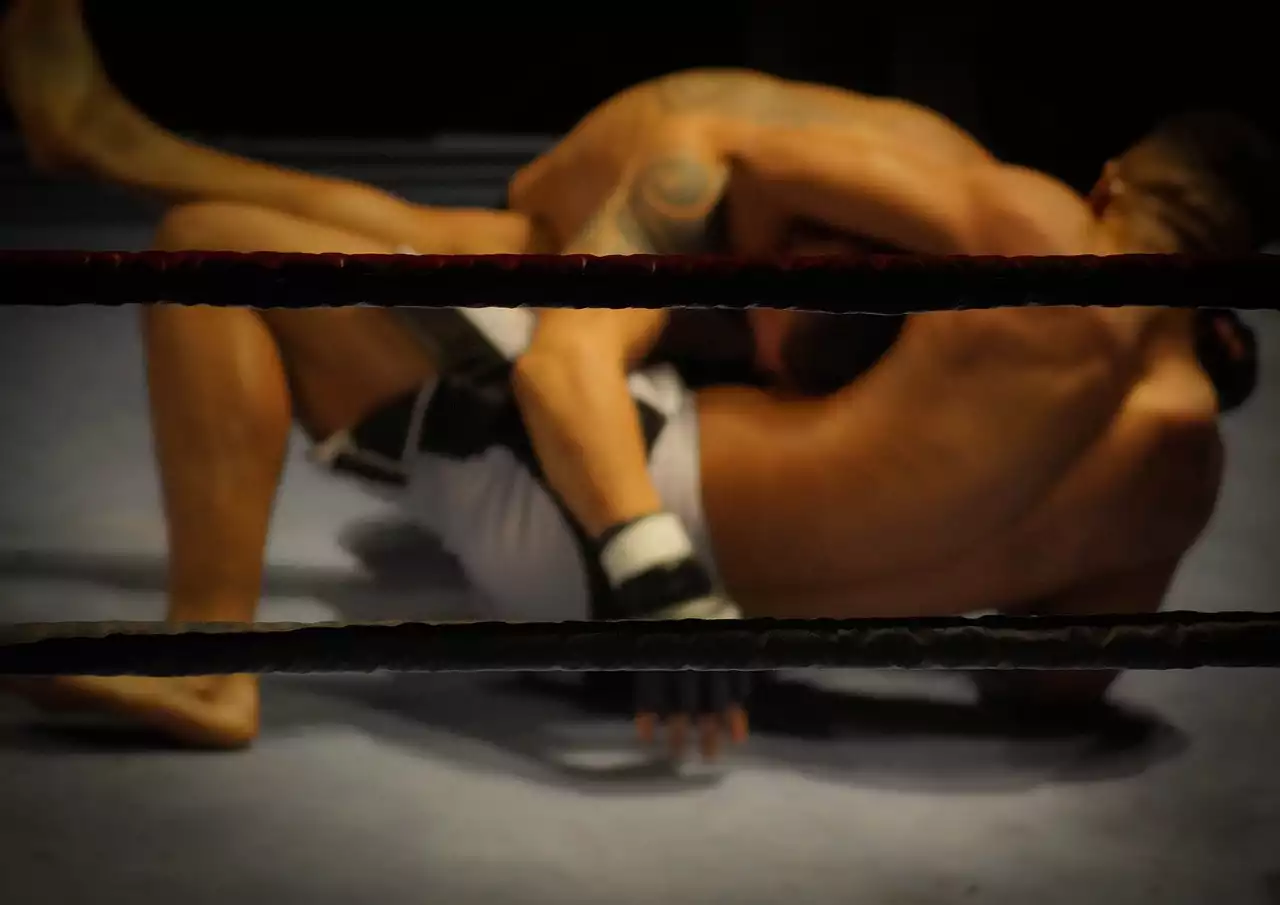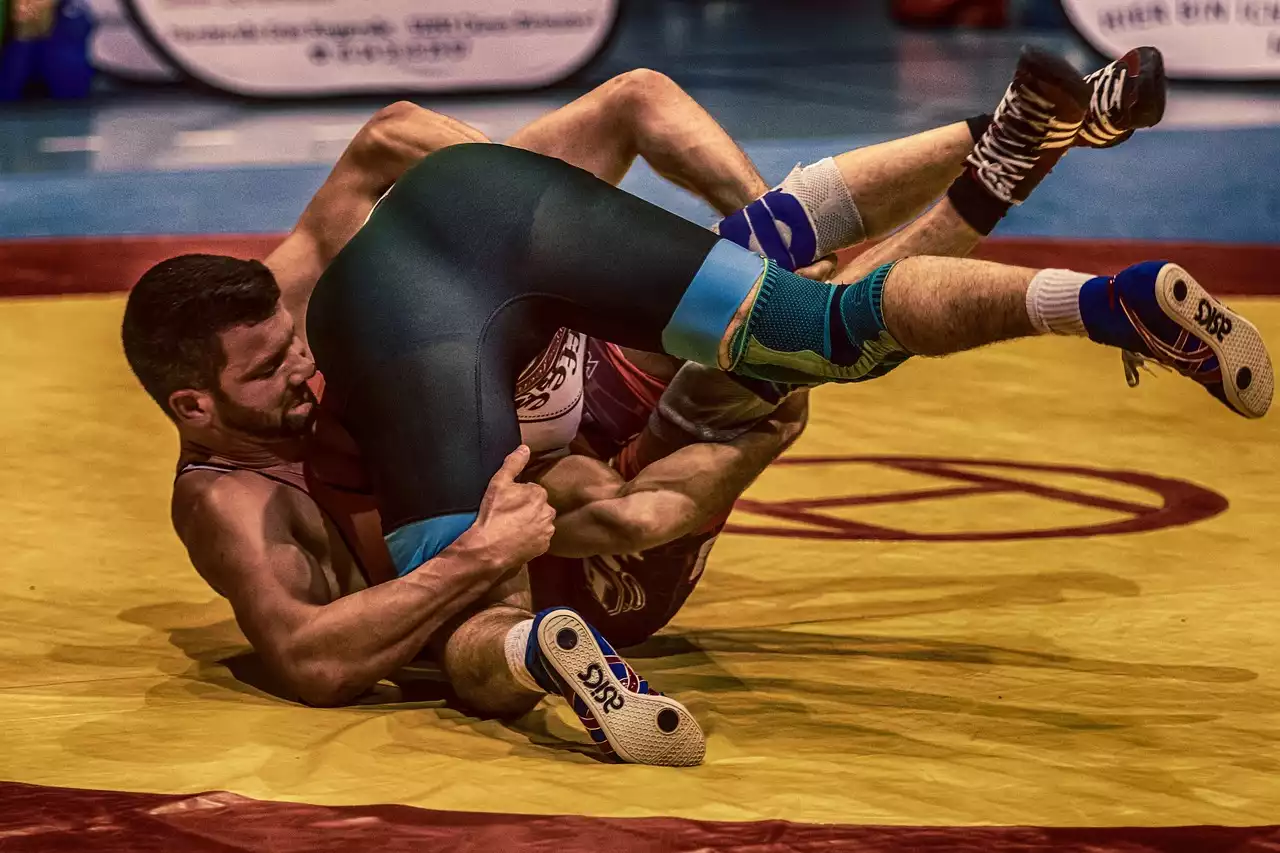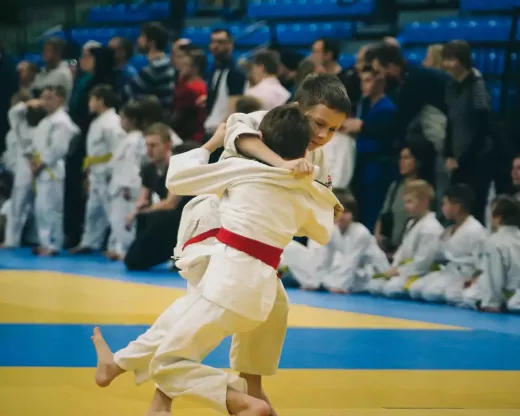Understanding the Ring and Its Components
Before diving into wrestling techniques, it's important to understand the ring and its components. The ring is a circular mat that measures 32 feet in diameter and is surrounded by a circle of foam padding. The center of the ring is marked by a small circle, which is used to start the match.
The mat itself is made of durable material that provides traction for wrestlers while also providing a soft landing surface. The foam padding that surrounds the ring is designed to protect wrestlers from injury if they are thrown out of the ring. It's important to note that the foam padding is not considered part of the ring, so wrestlers must stay within the boundaries of the mat in order to avoid being disqualified.
In addition to the ring and its components, there are several other key elements to wrestling, including rules and regulations, scoring, and weight classes. Understanding these elements is crucial for success in wrestling, regardless of your skill level.
Basic Wrestling Techniques - Stance and Footwork
The foundation of wrestling is proper stance and footwork. A good stance is essential for balance and control, while proper footwork is crucial for movement and agility. Here's a breakdown of the basic wrestling stance and footwork:
Stance: The basic wrestling stance involves standing with your feet shoulder-width apart, knees slightly bent, and weight evenly distributed between both feet. Your head should be up, your back straight, and your hands should be held in front of you, ready to grapple.
Footwork: In wrestling, footwork is used to create angles and set up takedowns. The most common footwork techniques include the slide step, the crossover step, and the pivot step. The slide step involves stepping forward with one foot and then sliding the other foot forward to maintain your stance. The crossover step involves crossing one foot over the other and then stepping forward to create an angle. Finally, the pivot step involves pivoting on one foot to create an angle and then stepping forward with the other foot.
By mastering these basic techniques, you'll be well on your way to becoming a skilled wrestler.
Takedowns - Single Leg, Double Leg, High Crotch, and More
Takedowns are a key component of wrestling and involve taking your opponent down to the mat while maintaining control. There are several types of takedowns, including the single leg, double leg, and high crotch, among others. Here's a breakdown of each takedown:
Single Leg: The single leg takedown involves grabbing one of your opponent's legs and lifting it off the mat, while at the same time pushing them off balance. To execute this takedown, step forward with one foot and reach down to grab your opponent's leg just above the ankle. Pull their leg towards you while pushing them off balance with your other hand, and then drive forward with your shoulder to take them down.
Double Leg: The double leg takedown involves grabbing both of your opponent's legs and lifting them off the mat, while at the same time pushing them off balance. To execute this takedown, step forward with both feet and reach down to grab both of your opponent's legs just above the ankles. Pull their legs towards you while pushing them off balance with your hands, and then drive forward with your shoulder to take them down.
High Crotch: The high crotch takedown involves grabbing your opponent's leg and lifting it up to your side, while at the same time pushing them off balance. To execute this takedown, step forward with one foot and reach down to grab your opponent's leg just above the knee. Lift their leg up to your side, while at the same time pushing them off balance with your other hand, and then drive forward with your shoulder to take them down.
By mastering these takedowns and others, you'll be able to take control of your opponent and dominate the match.
Escapes and Reversals - Stand-Up, Sit-Out, and Granby Roll
Escapes and reversals are techniques used to get out of your opponent's grasp and regain control. There are several types of escapes and reversals, including the stand-up, sit-out, and Granby roll. Here's a breakdown of each technique:
Stand-Up: The stand-up escape involves standing up from the mat while breaking your opponent's hold. To execute this escape, turn towards your opponent and plant one hand on the mat while using your other hand to push off your opponent's grip. Then, stand up and turn to face your opponent.
Sit-Out: The sit-out escape involves sitting out from your opponent's grip and taking control of their back. To execute this escape, turn towards your opponent and plant one hand on the mat while using your other hand to grab their wrist. Then, sit out and take control of their back.
Granby Roll: The Granby roll is a reversal technique that involves rolling out of your opponent's grasp and taking control. To execute this reversal, tuck your head and roll towards your opponent's legs. As you roll, use your legs to push off the mat and spin around to take control.
By mastering these escapes and reversals, you'll be able to get out of tough situations and regain control of the match.
Pinning Combinations - Cradle, Half-Nelson, and Tilt
Pinning combinations are techniques used to pin your opponent to the mat for a win. There are several types of pinning combinations, including the cradle, half-nelson, and tilt. Here's a breakdown of each combination:
Cradle: The cradle is a pinning combination that involves locking your opponent's head and leg together. To execute this combination, reach across your opponent's body and grab their opposite wrist while at the same time grabbing their opposite knee. Then, pull both towards you to lock their head and leg together.
Half-Nelson: The half-nelson is a pinning combination that involves using your arm to lock your opponent's arm and neck. To execute this combination, reach across your opponent's body and grab their opposite wrist while at the same time using your other arm to wrap around their neck. Then, pull their wrist towards you while pushing their head away to lock their arm and neck together.
Tilt: The tilt is a pinning combination that involves turning your opponent onto their back while maintaining control. To execute this combination, start with a half-nelson and then reach around your opponent's body to grab their opposite hip. Then, roll them onto their back while maintaining control of their arm and neck.
By mastering these pinning combinations, you'll be able to win matches and dominate your opponents.
Advanced Wrestling Techniques - Throws and Suplexes
Advanced wrestling techniques involve throws and suplexes, which are used to take your opponent down with force. These techniques require strength and agility, as well as proper technique. Here's a breakdown of each technique:
Throws: Throws involve using your opponent's momentum against them to take them down. There are several types of throws, including the arm drag, fireman's carry, and hip toss, among others. To execute a throw, use your opponent's momentum to shift their weight and then use your own strength to take them down.
Suplexes: Suplexes involve lifting your opponent off the mat and throwing them down with force. There are several types of suplexes, including the belly-to-belly, belly-to-back, and German suplex, among others. To execute a suplex, use your strength to lift your opponent off the mat and then throw them down with force.
By mastering these advanced techniques, you'll be able to surprise your opponents and take them down with ease.
Drills and Exercises to Improve Wrestling Skills
To improve your wrestling skills, it's important to practice regularly and incorporate drills and exercises into your training routine. Here are some drills and exercises to help improve your wrestling skills:
Shadow Wrestling: Shadow wrestling involves practicing your moves and techniques without a partner. This is a great way to improve your muscle memory and technique.
Partner Drills: Partner drills involve practicing your moves and techniques with a partner. This is a great way to simulate real match situations and improve your timing and reaction time.
Strength Training: Strength training is important for wrestling and involves building strength and endurance through weightlifting and cardiovascular exercise.
By incorporating these drills and exercises into your training routine, you'll be able to improve your wrestling skills and dominate your opponents.
Common Mistakes to Avoid in Wrestling
While wrestling is a challenging and rewarding sport, there are several common mistakes that wrestlers make that can hinder their success. Here are some common mistakes to avoid in wrestling:
Lack of Focus: Wrestling requires focus and concentration, so it's important to stay focused throughout the match and avoid distractions.
Poor Technique: Poor technique can lead to injury and can also make it difficult to execute moves and techniques effectively. Make sure to practice proper technique and seek feedback from your coach.
Lack of Conditioning: Wrestling requires strength and endurance, so it's important to maintain good physical conditioning through regular exercise and training.
By avoiding these common mistakes, you'll be able to perform at your best and achieve success in wrestling.
Wrestling Gear and Equipment
Finally, it's important to have the right gear and equipment for wrestling. Here's a breakdown of the essential gear and equipment:
Wrestling Shoes: Wrestling shoes provide traction and support on the mat, and are designed to be lightweight and flexible.
Singlet: A singlet is a one-piece uniform that is required for wrestling matches. It's designed to be form-fitting and allows for freedom of movement.
Headgear: Headgear is designed to protect your ears and head from injury during matches.
By having the right gear and equipment, you'll be able to perform at your best and stay safe on the mat.










